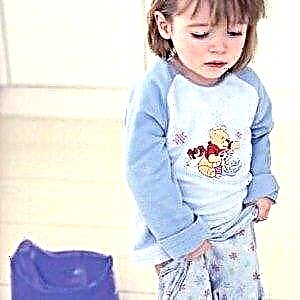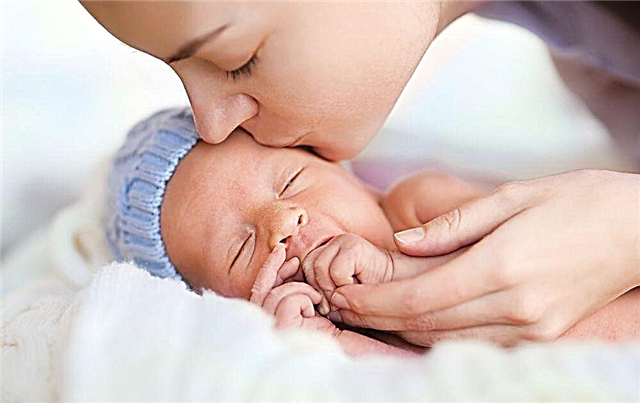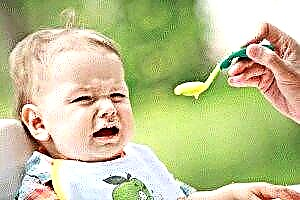Probably everyone will agree with me that the illness of children is carried worst of all by the parents, and not by the baby himself. It is adults who, repeatedly meeting with many symptoms of various diseases, know that severe pain can begin, that negative consequences from any disease and its transition into a chronic form cannot be ruled out. Perhaps such knowledge will move the parent in the right direction, that is, he will not postpone a visit to a pediatrician or narrow specialists. One of the serious diseases is children's cystitis in girls. Let's start with the terminology.
Cystitis Is an inflammatory process of the bladder. It is mistakenly believed that cystitis is a disease of adult women, but in fact, this disease has neither age nor gender. Both adults and children are equally susceptible to it.
Cystitis is common in babies. It must be understood that any cystitis appears when an infection enters the bladder. There can be many ways of multiplying infections.
Pathogenesis. How does it all start?
In different ways, the infection penetrates the urinary tract, and no one "drives it away" there. In general, she becomes comfortable there, and she begins to reproduce. At this time, any person, young and old, feels a burning sensation during urination. Further, the process goes without obstacles into the bladder.
 The fact is that in girls, the urethra is quite short, so it does not take long to penetrate the bladder. And due to the fact that this channel is also wide, millions of bacteria can multiply there.
The fact is that in girls, the urethra is quite short, so it does not take long to penetrate the bladder. And due to the fact that this channel is also wide, millions of bacteria can multiply there.
And if there are no defenders from the immune system or the blood supply in this place deteriorates during hypothermia, then the bacteria do not spread anywhere, but remain in place and multiply, and with an excess in the canal, they pass to the bladder mucosa.
There they attack the entire organ and, without adequate therapy, either rise higher or destroy the mucous membrane and penetrate into the muscle layer. In one case or another, all this leads to disruption of the bladder.
Where does the girl's cystitis come from?
- Decreased immunity. When the body cannot cope with even small concentrations of infections from outside. This also includes hypothermia, vitamin deficiency, the use of drugs that lower protective functions, and chronic diseases.
- Improper use of diapers. In general, this topic must be approached separately, since improper use of diapers and insufficiently proper care of the genitals can lead to various diseases: cystitis, synechiae, diaper rash, and so on. Today it is known that changing a diaper is necessary not only after a bowel movement, but also after each urination. This will prevent the formation of harmful microflora and "greenhouse" effect, which aggravate the situation. Parents should make every effort to ensure that at the latest at the age of 2, the girl does not need diapers.
- Poor hygiene in girls. It is important for parents to understand how to properly wash the baby. It is very important. The structure of the girl's genitals is such that if you wash the child from back to front, then all infections that normally live in the anus will gradually move mechanically into the vagina and urethra, causing an inflammatory process in the urethra. And urethritis always very quickly turns into cystitis due to the structural features of the canal in girls. The fact is that the urethra of the female urinary system is short and wide; in such conditions, any infection quickly enters the bladder. That is why girls get cystitis 6 times more often than boys. You need to teach a baby the skills of personal hygiene from a year, and you can entrust her with the washing process from 6 years old.
- Mechanical impact. After medical procedures, infection of the bladder with infections is also possible, because a healthy bladder is sterile.
How to understand what is wrong with the child?
Indeed, sometimes the behavior of a child is not entirely clear, especially if he still does not know how to speak at all. In children under one year old with cystitis, mainly the following symptoms occur:
 anxiety (the child is constantly naughty, irritated);
anxiety (the child is constantly naughty, irritated);- the child's mood is bad, tearfulness is observed;
- frequent urination;
- a slight increase in temperature is possible;
- the color of the urine is cloudy or just deep yellow.
It is easier with older children - they can already tell where it hurts, although they do not realize the cause of the ailment. Therefore, it is important to ask questions correctly and notice everything that he does. Symptoms in children aged two, three years and older are somewhat different:
- frequent urination, pain or cramps may occur during urination;
- pain in the lower abdomen or groin area;
- cloudy urine;
- possible temperature rise;
- urinary incontinence.
In any case, with such symptoms, it is very important not to diagnose yourself, but be sure to contact the clinic, where the child will be examined and an adequate therapy will be prescribed.
These symptoms can be a sign of other diseases of the genitourinary system. And each of them requires treatment, since all this speaks of the inflammatory nature of the disease. If they are treated illiterately, then you run the risk of facing serious complications.
Having turned to a doctor, you need to be ready for a complete examination of the child, taking tests and other diagnostic procedures.
Acute or Chronic?
Symptoms of acute cystitis:
 severe pain in the lower abdomen;
severe pain in the lower abdomen;- frequent painful urge to urinate;
- possibly blood in the urine.
This picture, as a rule, occurs abruptly, often immediately after hypothermia.
With chronic cystitis, girls at 2 - 4 years old complain of:
- periodic pain in the lower abdomen;
- frequent urination, incontinence.
Diagnostics:
- Pass a urine test. Perhaps, the usual general urine test will not be enough, and then you will need to pass a bacterial urine culture with antibiotic sensitivity, urine analysis according to Nechiporenko. For the analysis to be reliable, you need to properly prepare for delivery. For example, you should wash yourself with soap. If we are talking about a girl who has vaginal discharge, she needs to be covered with a small cotton swab.
- Make an ultrasound of the bladder and the entire urinary system.
When the diagnosis is confirmed and we can confidently say that our two to three year old girl has cystitis, then we can already talk about the methods of effective treatment.
Treatment of cystitis in girls
Much has been written about how to treat cystitis in little girls at the age of 3, 5, 6 - 7. Today, there are many drugs for effective treatment. In addition to taking medications, treatment also includes a number of important rules:

- taking antibiotics. Antibiotic courses are selected by a strictly treating doctor. It is extremely important to follow all the doctor's prescriptions;
- bed rest or, if possible, rest;
- sedentary warm baths with herbal tinctures (chamomile, sage, oak) for 10 minutes 3 times a day;
- balanced diet. Also, be sure to eat meat and fish! Fresh fruits and vegetables should be present in the diet of a sick child;
- plentiful drink. It is advisable to make fruit drinks with berries for the child (special preference is given to lingonberry berries, they are the most diuretic of all berries), which have diuretic properties. It is advisable to brew fruit drinks and in no case cook, since the child must receive a huge amount of vitamin C with berries. If berries are absent, drinking plenty of water can be combined with the drug Kanefron. This medication is composed of herbal herbs that improve the elimination of excess fluid. The drug is suitable for use in children. Usually 1 - 2 tablets are prescribed 2 - 3 times a day for 10 days;
- health care. During and after treatment, do not overcool, as this can lead not only to cystitis and its complications, but also to inflammatory diseases in the surrounding tissues.
Treatment of the acute stage of the disease is much easier and faster than the chronic one. The chronic stage is almost impossible to cure. It is important to achieve long-term remission and, at the time of exacerbation, to choose the right therapy.
Appearing for the first time, cystitis can disturb your baby after a while, even if you have completely treated it. This is already a predisposition. Therefore, all prevention methods must be followed.
Prevention
First of all, you should pay attention to the rules of personal hygiene. The girl should be washed 1 - 2 times a day, the shower stream and the movements of the washing hand should be directed from front to back, and not vice versa. The child's towel must be individual. The use of diapers should be kept to a minimum.
 Secondly, it is necessary to ensure that the child does not overcool. In addition, all nutrition must be correct. To minimize the use of unnatural products - sausages, chips, canned food, fried and salted. Focus on fresh vegetables, fruits, meat and fish. More outdoor walks.
Secondly, it is necessary to ensure that the child does not overcool. In addition, all nutrition must be correct. To minimize the use of unnatural products - sausages, chips, canned food, fried and salted. Focus on fresh vegetables, fruits, meat and fish. More outdoor walks.
Thirdly, react as quickly as possible to any ailments or diseases. Since they reduce the immunity and defense mechanisms of the body, which will increase the chances of infection for reproduction.
In addition, you must carefully monitor the behavior of the child, bowel movements. An important factor in the prevention of cystitis is the absence of constipation. They lead to a deterioration in blood circulation in the small pelvis (in the intestine and bladder). And this increases the risk of inflammatory diseases. The chair should be regular, so the child's menu should contain fermented milk products, fiber.
Complications
The most dangerous in the disease of cystitis are possible complications.
The first and most formidable complication is pyelonephritis. Ascending, the infection rises through the ureters to the kidneys, where it remains, causing inflammation of the kidneys. Pyelonephritis is difficult to treat and is dangerous for a woman because even after achieving long-term remission, this disease is exacerbated during pregnancy, increasing the risk of negative effects on the fetus.
Vesicoureteral reflux can be another serious consequence of cystitis. In a healthy body, fluid flows only in one direction, and urine is excreted.
With this complication, after inflammation of the bladder mucosa, the muscles can no longer perform the correct emptying of the bladder, and urine can be thrown back into the ureters. And this is dangerous because the infected urine, getting into the ureters, will cause an inflammatory process there.
One of the dangerous and irreversible complications of inflammation of the bladder is interstitial damage to its walls. Interstitial cystitis is an inflammation process that passes from the mucous membrane to the muscle layer and disrupts the work of the entire bladder as a whole.
The symptoms of this disease are the same as in acute cystitis, only the pains are much stronger, and their intensity increases depending on the fullness of the bladder itself. The urge to urinate is frequent and spontaneous, disappearing immediately after emptying the bladder.
All complications are treated with antibiotics and physiotherapy. But despite the immediate start of therapy, there is a chance of encountering complications in the future.
Monotherapy is always ineffective, that is, it will not be possible to treat only with antibiotics, warm baths or diuretic herbs and berries. All treatment should be comprehensive, and then there is a chance of curing this disease.
It is very important to consult a doctor at the first symptoms, follow all the doctor's prescriptions - this is your duty in relation to the child and his health.

 anxiety (the child is constantly naughty, irritated);
anxiety (the child is constantly naughty, irritated); severe pain in the lower abdomen;
severe pain in the lower abdomen;

